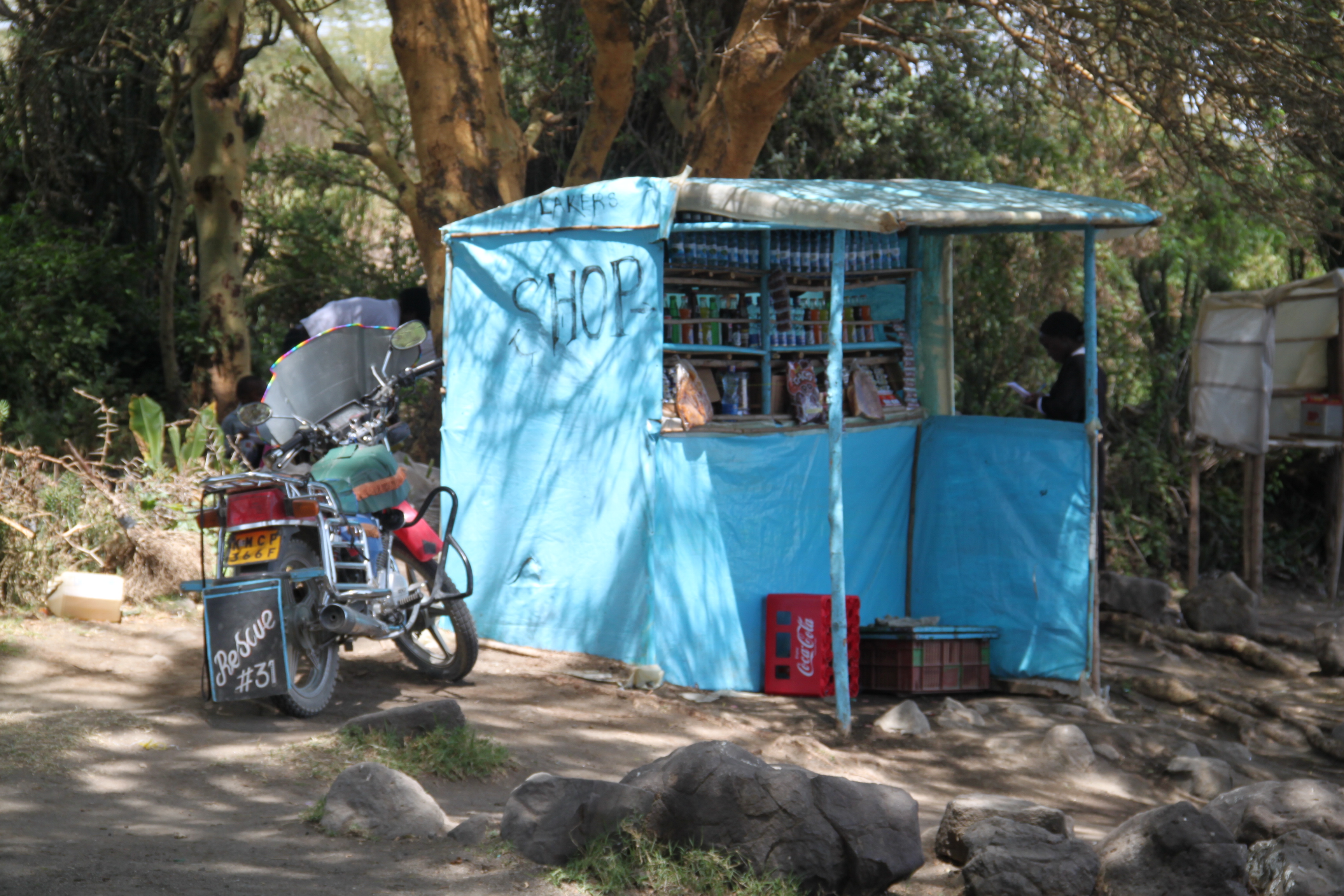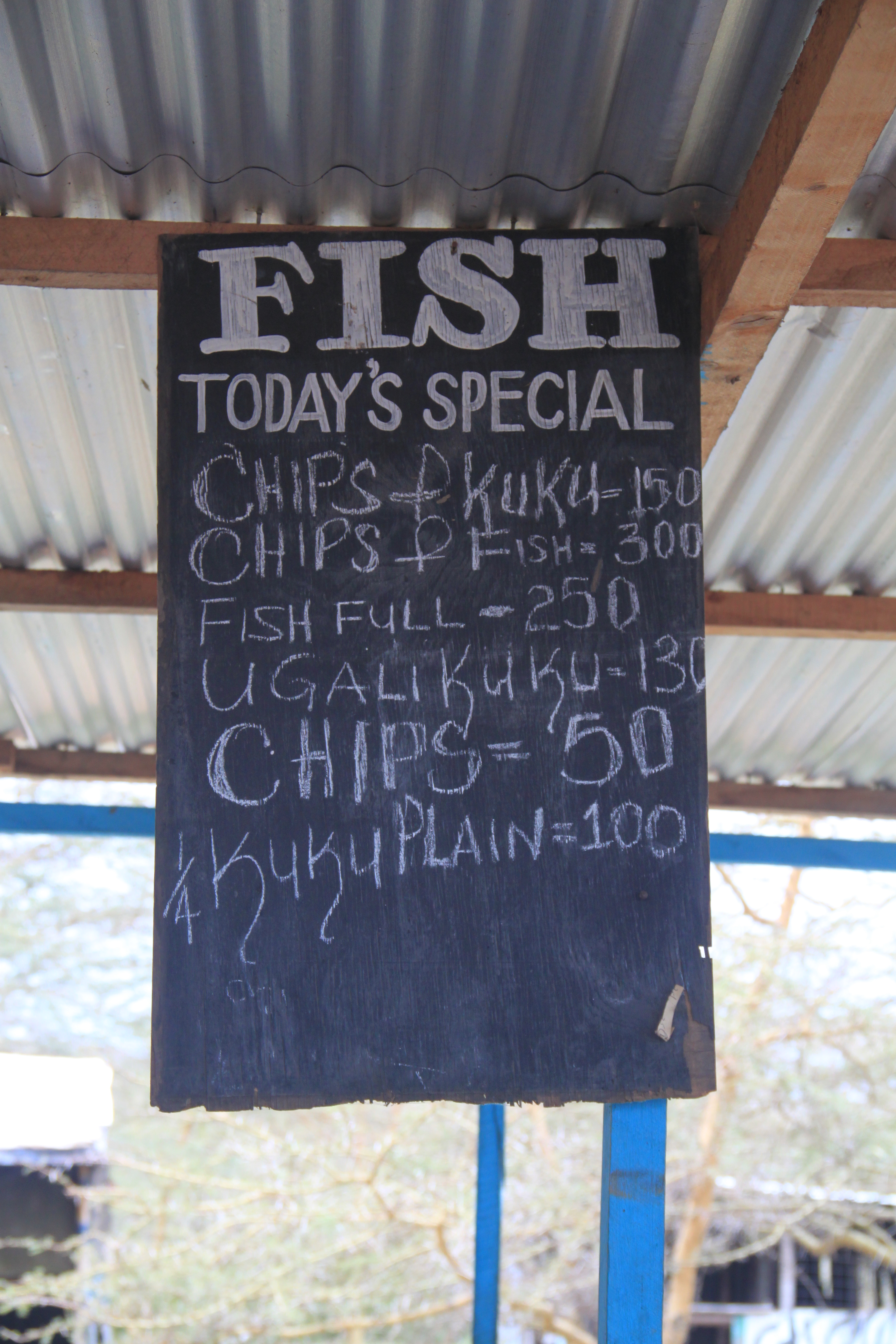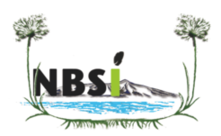Commerce




During the last 30 years, the availability of employment in the flower industry produced a massive increase in the population rate of the Lake Basin leading to one of the fastest population growth rates in Africa. Commerce is therefore a flourishing activity. Large scale flower farms were erected all along the southern edge of the lake riparian fringe and this is where the workforce is needed. Several farms offer accomodation and a canteen for most of their workforce.
Small canteens are also very popular, offering a restricted variety of meals based mainly on maize, potatoes and cabbage. Chicken, beef and mutton are available at local butcheries where roasted or boiled meat can be ordered and consumed directly. Mouth watering ready-to-eat food is being sold in small kiosk at the fish landing beaches (in the picture showing a menu, kuku stands for chicken and ugali is a rather stoggy maize meal used to accompany savoury dishes like meat and vegetables).
Beside the industrial farms, which grow flowers in greenhouses using hydroponics, areas adjacent to the lake tend to be dry, with unfertile soils unsuitable for growing crops and mostly used as pastures and as private game ranches. This implies that all vegetable supplies have to be imported from the northern foothills (Gilgil sub-catchment) and/or from the extensive farmlands situated on the Kinangop Plateau. Naivasha Town hosts a couple of large surface supermarkets that offer a great variety of goods. However, the majority of the population shops for daily supplies in village markets and corner kiosks that tend to be open daily.



